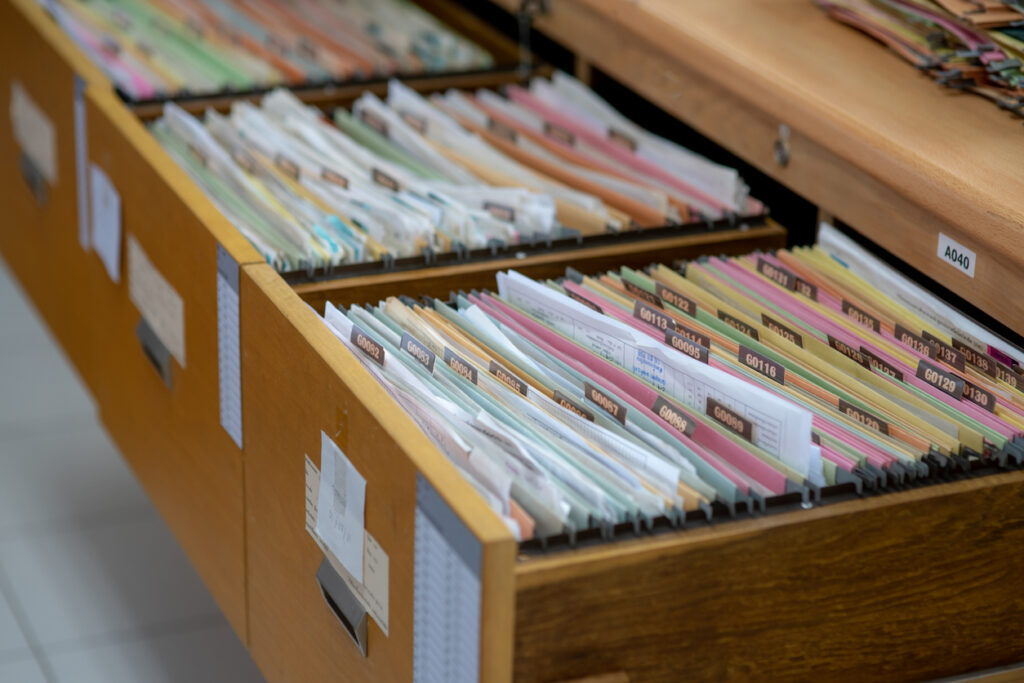Obtaining transcripts is a vital part of higher education, providing students and alumni with quick and efficient access to their academic records. Be it transferring to another school, job applications, or further education, a smooth transcript request process is crucial for ensuring a positive experience for students.
Yet, many institutions are plagued with challenges in handling these requests, which can lead to sluggish processes, security concerns, and poor service.
In this blog, we’ll dive into these issues’ root causes and explore how digitization can streamline the process, enhancing speed, security, and overall efficiency.
Root Cause #1: Slow and Cumbersome Manual Processes
One of the key challenges institutions face in managing transcript requests is the dependence on outdated paper-based systems. Over 70% of higher education institutions report delays in transcript processing due to manual handling. Typically, students or alumni submit requests either in writing or through email, requiring staff to retrieve, review, and dispatch paper transcripts manually. This method can be inefficient and time-consuming, particularly when handling a high volume of requests.

Consider a university with thousands of students and alumni: processing each request one by one can lead to significant delays. Such a sluggish system can frustrate students eagerly awaiting their transcripts and place a heavy burden on staff managing numerous requests simultaneously. Additionally, manually handling paper records enhances the likelihood of errors, like sending incorrect transcripts or misplacing documents during retrieval.
Root Cause #2: Lack of Centralized and Accessible Systems
Another significant challenge for higher education institutions is the absence of centralized, easily accessible systems for storing and retrieving transcript records. Often, these valuable documents are dispersed across multiple departments or physical locations, complicating the retrieval process.

Picture a student needing their transcript: they might have to reach out to several departments just to access it. Alternatively, records might sit in various file cabinets, leaving staff struggling to find the correct document promptly.
This decentralized storage approach not only adds confusion and delays to transcript requests but also makes it tough to track record locations or access permissions, potentially leading to errors or overlooked requests.
Root Cause #3: Security and Compliance Concerns
Handling sensitive student information is a significant concern for higher education institutions, and traditional paper-based systems pose a higher risk of data breaches. Physical records are often vulnerable to theft, loss, or unauthorized access. In addition, manually transferring records via postal mail or in person increases the chances of mishandling sensitive data, leading to potential privacy violations.

Compliance is another key issue. Regulations such as the Family Educational Rights and Privacy Act (FERPA) require that educational institutions ensure the confidentiality of student records. With paper-based systems, tracking who has access to records and ensuring they are only shared with authorized individuals can be a daunting task. Inaccurate record-keeping or unauthorized access to student information can expose institutions to legal and financial risks.
Manual systems are especially prone to errors, such as misplaced or lost documents. This creates a vulnerability not only for students but also for the institution, as it could lead to identity theft, data breaches, or non-compliance with privacy regulations.
How Digitization Solves Transcript Request Challenges
Luckily, digitization offers a powerful remedy to these issues. By transforming paper-based records into digital formats, institutions can simplify the transcript request process, bolster security measures, and boost overall efficiency. Institutions that have adopted digitization report a 40% increase in efficiency in handling transcript requests.

Centralized, Searchable Databases
One of the key perks of digitizing transcripts is the ability to create a centralized digital archive that is easily accessible. With all records stored securely in a digital system, staff can quickly search for and access the needed transcript with just a few clicks, drastically cutting down on processing times. This digital approach also enhances transparency and tracking, as each request can be logged, offering real-time updates on its status.
Automation and Digital Workflows
By integrating digital workflows and automation, universities can more effectively manage large quantities of transcript requests. Automated systems can swiftly process requests, send out notifications, and even electronically deliver transcripts to students or third parties. This eliminates the need for manual intervention, reduces errors, and accelerates the entire process.
Security and Compliance
Digital systems offer heightened security compared to traditional paper records. With encryption, sensitive student information is kept secure. Access is limited to authorized personnel only, complete with comprehensive logs detailing who accessed each record and when. This ensures compliance with regulations such as FERPA and data protection laws, providing peace of mind for both students and institutions. Additionally, digital systems can safely store records in the cloud or on secure servers, minimizing the risk of physical damage or loss due to incidents like fires or floods.
In Closing
Embracing digitization effectively addresses the core challenges in the transcript request process, resulting in a system that is faster, more secure, and more effective. Transitioning to digital processes not only frees up valuable time for students, alumni, and staff but also fortifies the institution’s adherence to legal regulations and protection of sensitive information.

Digitization offers a definitive solution to the persistent hurdles that higher education institutions encounter with transcript management. By leveraging modern technology, universities can ensure the process is optimized and secure, benefiting both administrative teams and students alike.
Let us know if you’re ready to transition to a more efficient, secure, and digital approach for the future.
Next Steps
Reach out to us today! Click the “Get Your Quote” button below, fill out the form, and we’ll quickly reply to you to discuss your project.
Further Reading
Overcoming 5 Common Fears In Microfilm Digitization
We’ll cover five common fears of microfilm digitization and discuss why you don’t need to be afraid! And also what you can do to move forward and make your project successful.
Who Has Access To Your Records During A Scanning Project?
Knowing who has access to your records during a digital scanning project is vital to a well-crafted plan. Learn about the different parts of a digitization project and how to evaluate your scanning vendor.
3 Pain Points Of Records Managers And How To Avoid Them
Are you managing records? Does it sometimes drive you a little crazy dealing with the physical copies? Read on about three common pain points and what to do about them!

